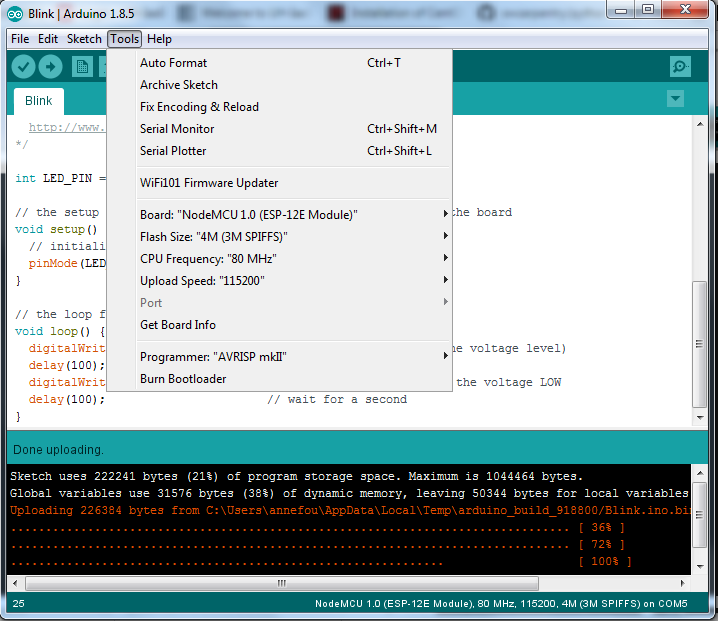

It's still a very early stage but should hopefully be functional for most use-cases. The idea behind the app is to make the flashing and setup of ESP Easy FW as stream lined as possible. It will extract needed file structure and missing files automatically.

All needed files are included in the EXE file, just download it and place it where you want it. Note that if it doesn't start after a minute or less you probably have a problem with the connections or with the driver to the UART(TTL), also maybe the flash tool doesn't know what com port to use when flashing the firmware.ESP Easy Flasher is a wrapper for the great ESPTOOL.exe and Power Shell to be able to easily flash and program ESP8266 units with the firmware ESP Easy. GPIO0- > GND ( Only for when loading the firmware because this pin is what decides if to boot in firmware load mode or regular mode)Īfter connecting the ESP8266 to the UART you simply push theįLASH button in the nodemcu-flasher and that's it it should start flash the firmware to the ESP.

You should find the pinout of this board and the connections are: To connect the ESP8266 you first need to understand what version of ESP8266-XX you have - The basic 01 version with 2 gpio(0,2), or a more complicated version. Now we need to connect the ESP8266 to an TTL-USB of some sort, I'm using the FTDI232 but there are alot of options out there, Have a look on ebay

(how to check if the os version is 32bit or 64bit ) Inside the folders there is a Win32 version and a Win64 version, choose the one that suits your os version So how do we load this firmware on the ESP8266 chip:Īctually it's pretty simple, we just need to go to : Burning this rom will makes it possible to use all the great features of the ESP8266 micro-controller, such as SPI,UART,I2C,PWM,GPIO and more. The topic today is how to burn on the ESP8266 a custom rom named the NodeMCU. You are probably a fan of the blog ) or you already know what the ESP8266 is.įor those of you who don't know what a ESP8266 is, it's a small WiFi module with an arm processor and it has all the functionality of WiFi excluding ssl.Īlso it's Arduino compatible and it's the most cheap arduino compatible WiFi module there is.īut on this post we are not going to mention arduino (more than we have to at-least). So, I'm guessing that if you stumbled upon this page, Menu Flashing the NodeMCU firmware on the ESP8266 (Windows) - Guide 13 January 2015 on ESP8266, Flash, Firmware, Windows, WiFi, NodeMCU, TutorialĮDIT (07-Mar-15): If you own version 12 of the ESP8266 or any version where more GPIO are exposed read here about some additional info for flashing the firmware.


 0 kommentar(er)
0 kommentar(er)
